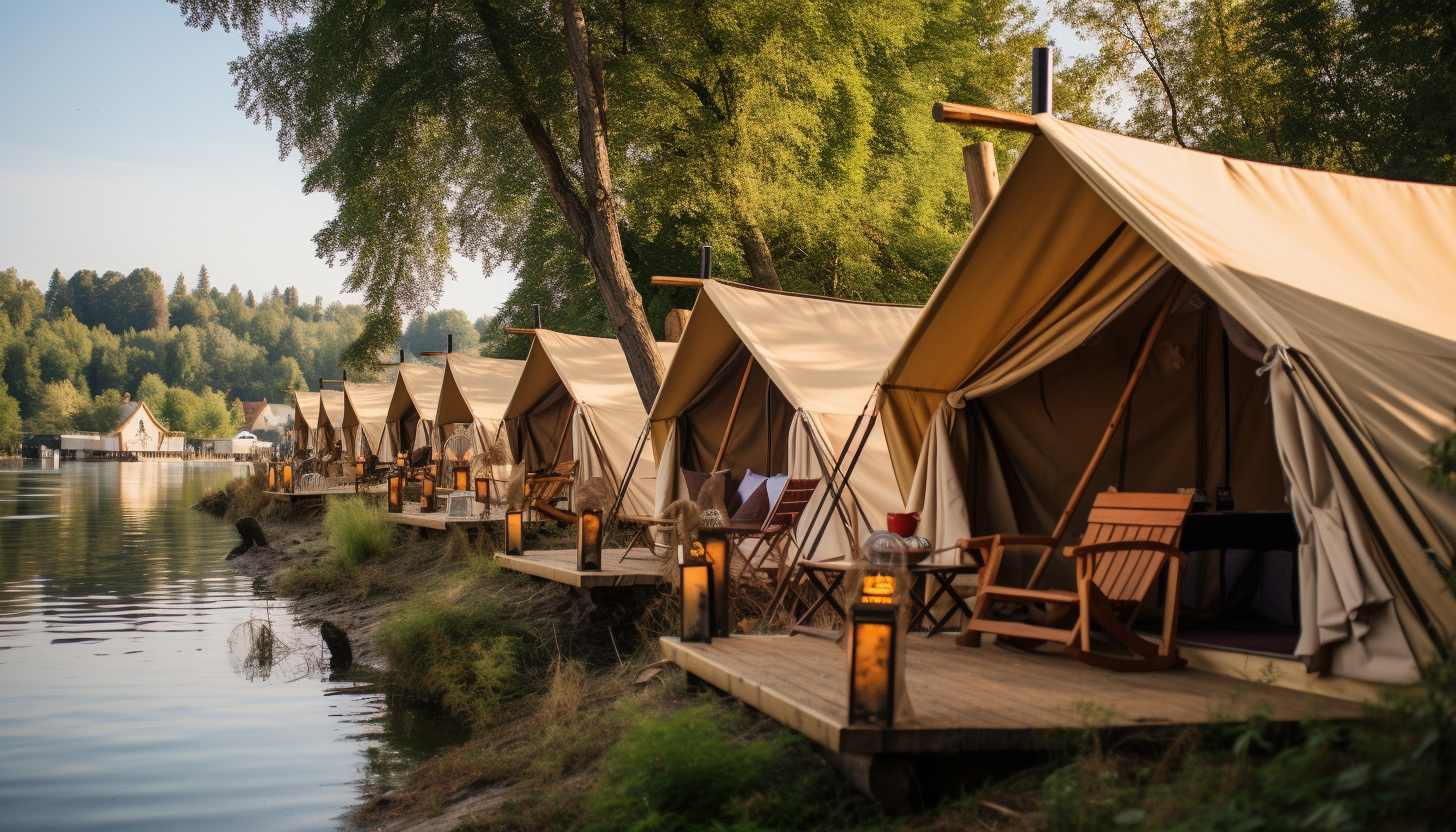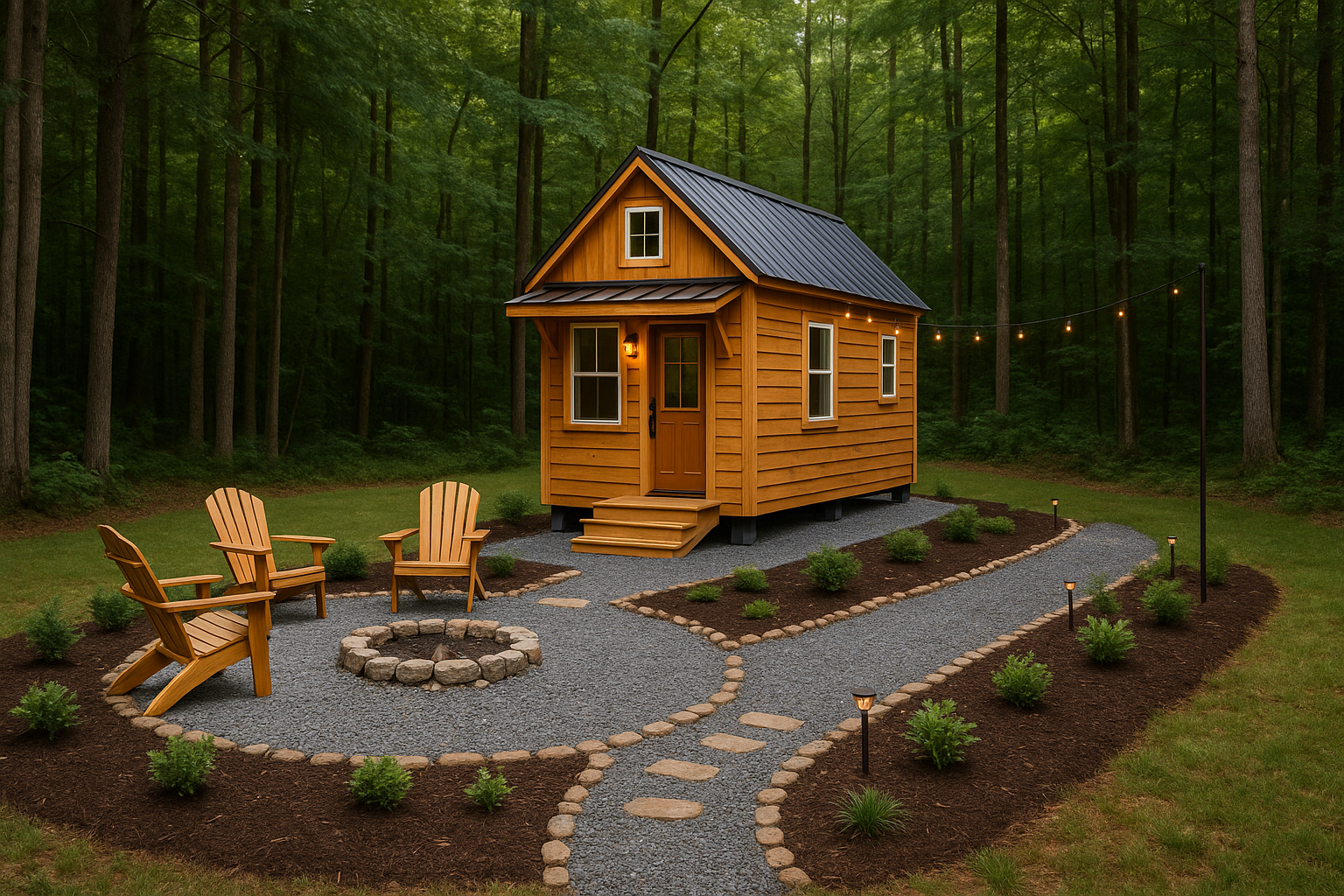A yurt, with its circular, portable, tent-like structure, offers a unique blend of comfort, sustainability, and minimalism. It’s a reassuringly adaptable living option, capable of withstanding different climates and terrains, and providing a cozy, eco-friendly living space.
The traditional yurt, known as a “ger” in Mongolia, has been used for thousands of years by nomadic tribes across the Central Asian steppes. These original yurts were designed to be easily assembled and disassembled, making them ideal for a mobile lifestyle. Their circular shape provides excellent wind resistance and heat efficiency, which is essential in the harsh climates of Mongolia and Kazakhstan.
Modern yurts are inspired by this ancient design but come with upgrades. They often include insulated walls, skylights, hardwood floors, wood-burning stoves, electricity, plumbing, and even solar panels. These contemporary yurts can serve as full-time homes, Airbnb rentals, vacation cabins, glamping sites, backyard offices, or studios.
Parts of a Yurt
- Circular Frame: Typically made from treated wood or metal for durability.
- Lattice Wall (Khanna): A collapsible wooden grid that forms the circular walls.
- Roof Poles (Uni): Radiate from the top ring (the crown) to support the roof.
- Center Ring (Tono): The crown at the top of the yurt, often with a skylight or ventilation opening.
- Outer Cover: Made from canvas, vinyl, or high-tech weather-resistant fabric.
- Insulation Layer: Optional, but used in colder climates to retain heat.
Types of Yurts
Yurts come in several styles, depending on use and materials:
1. Traditional Yurts (Gers)
- Handmade from felt and wood
- Often imported from Mongolia
- Best for authenticity, not as common in Western housing codes
2. Modern Fabric Yurts
- Engineered to meet building codes
- Made with vinyl-coated polyester, canvas, and modern insulation
- Can include electricity, plumbing, heating, and AC
3. Hard-sided Yurts
- Hybrid between a cabin and a yurt
- Fixed walls, sometimes with wooden siding or windows
- More permanent and durable, usually more expensive
4. Pop-up or Glamping Yurts
- Designed for seasonal use
- Lightweight and quick to assemble
- Often used in the tourism industry
How Much Do Yurts Cost?
The cost of a yurt varies based on size, materials, insulation, and customization. Here’s a general breakdown:
Basic Yurt Kits (No Plumbing- Electricity)
- 12 ft to 16 ft: $5,000 – $10,000
- 20 ft to 24 ft: $12,000 – $18,000
- 30 ft to 40 ft: $20,000 – $40,000+
Fully Finished Yurts (Turnkey Homes)
- Can range from $30,000 to $100,000+
- Includes interior walls, kitchen, bathroom, solar power, HVAC, and insulation
Additional Costs
- Foundation: $1,500 – $5,000 depending on terrain
- Permits: Vary by location
- Utilities Installation: $5,000 – $20,000 if off-grid
- Delivery: $1,000 – $3,000 depending on distance and size
While the base yurt kit may seem inexpensive, turnkey living can match the cost of a small cabin or trailer home when utilities and customization are included.
Best Places to Buy Yurts (U.S. and International)
Here are some reputable yurt manufacturers that offer both DIY kits and fully customized yurts:
1. Pacific Yurts (Oregon, USA)
- The original manufacturer of the modern fabric yurt
- Known for durability and customer service
- Offers a wide range of upgrades: glass windows, French doors, and insulation
Website: www.yurts.com
2. Colorado Yurt Company (Montrose, CO)
- Offers yurts, tipis, and canvas wall tents
- Great for extreme weather conditions
- Customizable interiors and snow-load options
Website: www.coloradoyurt.com
3. Rainier Outdoor (Washington State)
- Specializes in luxury yurts with hardwood flooring, plumbing, and solar power
- Often used in luxury glamping resorts
Website: www.rainieroutdoor.com
4. Groovy Yurts (Canada/Mongolia)
- Imports traditional Mongolian yurts (gers)
- Ideal for cultural authenticity
- Best for moderate climates or dry regions
Website: www.groovyyurts.com
5. Freedom Yurt Cabins (USA)
- Offers hard-sided yurts that resemble small cabins
- Good for permanent installations and year-round living
Website: www.freedomyurtcabins.com
Pros and Cons of Living in a Yurt
Pros
- Affordable: Much cheaper than traditional homes
- Eco-Friendly: Low carbon footprint, many models are off-grid compatible
- Flexible: Can be disassembled and relocated
- Comfortable: Surprisingly warm in winter and cool in summer with proper insulation
Cons
- Zoning Restrictions: Not all areas allow full-time yurt living
- Maintenance: Fabric covers may need replacement every 10-15 years
- Security: Less secure than traditional homes if located in urban or high-crime areas
- Limited Privacy: Most yurts are open-plan inside unless interior walls are added
Where Can You Put a Yurt?
You can place a yurt on private land, campgrounds, farms, or designated tiny home communities. However, zoning laws vary by state and county in the U.S. You’ll need to check with local building departments about:
- Permits
- Foundation requirements
- Plumbing codes
- Use classification (temporary vs. permanent dwelling)
Many people place yurts on raised wooden platforms or concrete piers, which helps keep the structure dry and stable.
Yurts for Off-Grid and Sustainable Living
Yurts are ideal for off-grid lifestyles. They pair well with:
- Compost toilets
- Rainwater catchment systems
- Wood-burning stoves
- Solar power
This makes them popular among homesteaders, minimalists, and nature lovers. In some areas, yurts are used in eco-resorts, wellness retreats, and spiritual centers.
Are Yurts Worth It?
If you’re looking for a cost-effective, eco-conscious, and unique way to live or vacation, yurts can be a fantastic option. Whether you’re downsizing, building a backyard guesthouse, or starting a glamping business, yurts offer a flexible and modular solution. They’re not for everyone, but for those who love adventure, simplicity, and nature, a yurt can become much more than just a shelter. It can be a lifestyle.
To learn more about the glamping industry, read our article “What is Glamping?”





